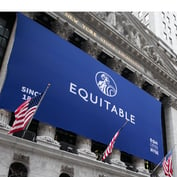In recent years, the use of rebates as a marketing tool for a wide variety of products has increased substantially. The cost of the most recent car that I purchased was reduced by a rebate of $5,000. Certainly a healthy savings, but one can’t help but wonder if the car was overpriced in the first place and the rebate simply brought the price in line with competition. But regardless of the motive, the rebate did influence my buying decision.
To a lesser extent, on other items–from smoke alarms to canned goods–rebates have affected buying decisions in our family. Coupons clipped from Sunday newspapers have, over the years, saved us hundreds, if not thousands, of dollars. Such rebates are important in our purchasing decisions.
Does that mean rebating is always good for the consumer? To the extent that a rebate persuades a person to make an unwise or unnecessary purchase, the answer is clearly no. Even a bargain has to measure up to a person’s real needs. Because rebates do not always serve the public interest, there are limitations under the law to their use. Kickback schemes are an example of the way a rebate may be used to illegally influence a major purchase, particularly if it is a governmental procurement. State insurance regulators have, for more than 100 years, deemed that rebating of life insurance commissions is not in the public interest. Regulators have consistently placed strict limitations on any inducement offered to a purchaser of life insurance. Perhaps it would be useful to review why.
First of all, it is always important to keep in mind that life insurance is affected with a “public interest” and is a more critical purchase than, say, an automobile or smoke alarm. The focus of rebating in life insurance sales has always been the agent’s first-year commission. Unlike other items where the cost is a one-shot proposition, a life insurance purchase involves a stream of premium payments extending over many years. Therefore, a discount on the first-year premium, as attractive as it may be, may be costly in the long run if it induces a person to purchase a contract less competitive than others that were available, or if it is otherwise unsuitable.
It is also worth noting that rebates in the commercial world are manufacturers’ rebates. In most cases, the dealer who sells the product is not involved, and certainly the salesperson does not forfeit salary or commission where such rebates are offered. The life insurance business already has in place an arrangement whereby customers, over time, receive appropriate discounts on their policies. I refer to the principle of “participating insurance,” where dividends are paid on certain gains achieved by the insurers. Such dividends are paid in an indiscriminate manner to all policyholders without bargaining or coercion. It is an orderly and legal way to return a portion of the premium to the policyholder. I am told that whole life has started to re-emerge as a significant player in our marketplace, and, if so, dividends will once again play an important role in keeping the price of life insurance affordable.
We do not have to imagine what our marketplace would be like if there were no restrictions on rebating, for we have been there before. One of the main reasons that NALU (now the National Association of Insurance and Financial Advisors) was created was to clean up the terrible conditions that existed at that time in the marketing of life insurance, with rebating being the primary culprit.








 April 23, 2006 at 04:00 PM
April 23, 2006 at 04:00 PM









